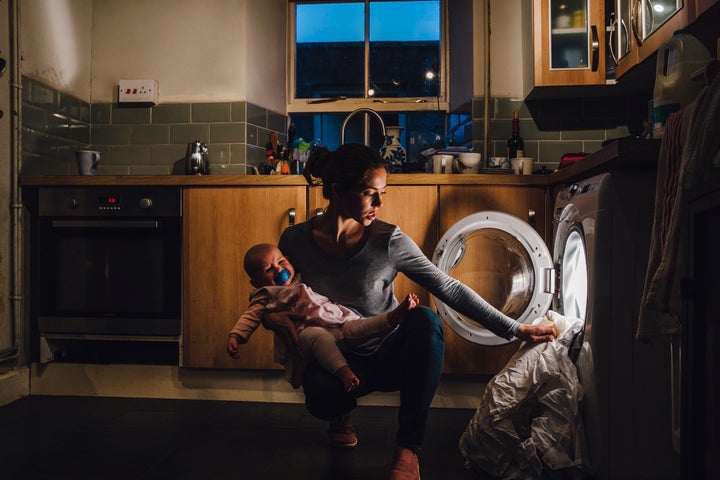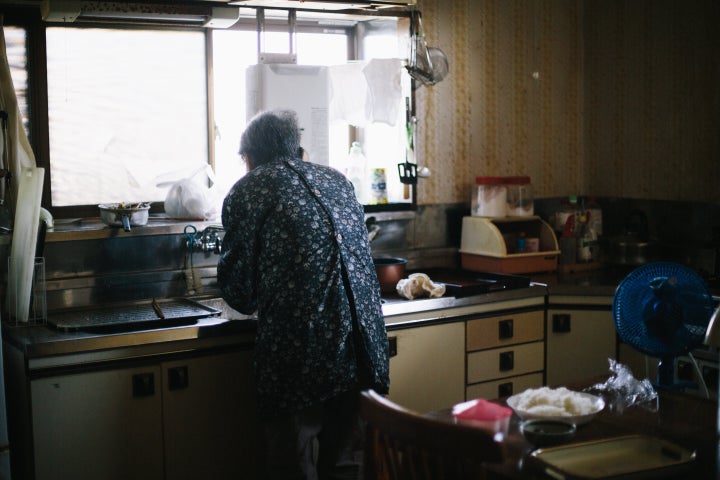A tale as old as time: the rich get richer and the poor get poorer.
Such is the logic of economic inequality. The world’s extreme wealth was, as we know, founded on sexism and racism. But here’s a perhaps less universally known truth: women and girls are currently driving the world’s economy … for free.
A new report from Oxfam, the international charity focused on poverty alleviation, has found that, while an exclusive group of men are getting richer and richer, women and girls are not.
Instead, they’re the ones shouldering the burden of poverty and unpaid work — work that is, the report says, valued at somewhere around $10.8 trillion per year, which is about three times the size of the world’s entire tech industry.
Most of that labour is care work. It’s looking after children and elderly people. It’s tending to those who are sick.
It’s daily domestic work like cleaning, cooking, mending, washing, fetching water, fetching firewood — essential tasks that, if people suddenly stopped doing them, would bring whole economies to a grinding halt.

“It is this unseen and unrewarded contribution by women that creates enormous wealth that is sucked upward into the bank accounts of the richest people and of the billionaires,” Max Lawson, Oxfam International’s head of inequality policy, told a reporter at Vatican News.
In other words: poor women are reaping a slim, meagre share of their own work.
And it’s not like they can just get another job and split the difference. The report found that nearly half of those women who are of working age (42 per cent, compared to 6 per cent of men) do not have enough time to work because their unpaid care responsibilities take up most of their time.
In Canada, women still do more unpaid care work than men
In rural communities and low-income countries, women can spend up to 14 hours a day on care work — about five times more than men in those same communities.
Here in Canada, that particular chasm has been steadily narrowing over the last few years. But it hasn’t closed completely. As it stands, women are still spending an average of 1.5 hours more per day than men on unpaid work activities, with about 3.6 hours spend on chores, household shopping and caring for children or other adult family members.
Men tend to do more “episodic” work, like taking out the garbage, doing house and car repairs, and mowing the lawn.
The discrepancy is even more glaring when you apply it to the undervalued work of stay-at-home moms. A study from 2019 collected a number of jobs — teacher, coach, event planner, and janitor, among others — that “reflect a day in the life of a mom” in an effort to estimate what she might make were she paid for all of the work she does.
The result: a stay-at-home mom’s median salary in 2018 would have been about $214,390 CAD, according to the study.

But it’s not just that women are doing more domestic work and making less money. It’s more than economic injustice. The gendered division of unpaid care work, particularly as it relates to motherhood, has ramifications that extend far beyond a mother’s bottom line.
The “invisible work” that many women do, according to a 2019 study published in the scientific research journal Sex Roles, can have major effects on their emotional and psychological wellbeing, from satisfaction with life to feelings of emptiness. The women in the study who reported being in charge of the household — a majority of those surveyed — also said they often felt overwhelmed by their roles as parents, and had little time to tend to their own needs.
“When mothers feel supported, they can have the emotional resources to cope well with the demands they face,” Dr. Lucia Ciciolla, an assistant professor of psychology at Oklahoma State University and the first author of the study, told Science Daily.
“Being able to address inequalities in invisible labour can allow women and families to create households that are more functional and less burdensome, and can also spare women mental gymnastics to find the space and time to care for themselves.”
Most domestic workers are women — they’re also among the most abused workers
As it stands, domestic workers are some of the most exploited workers in the world.
The Oxfam report included a number of statistics to illustrate this problem. Only one in 10 of these workers, for example, are protected by general labour laws. Ninety per cent don’t have access to social security. About half lack basic minimum wage protections, and even more than that don’t even have legal limits on their work hours.
And of course, 80 per cent of these workers globally are — you guessed it — women.
One of the main struggles here is that those who have the power to change this system are also the ones who benefit from it. Across the world, the recent Oxfam report says, men own 50 per cent more wealth than women, and since most government ministers and parliamentarians happen to be men, they’re the ones who tend to lead the decision making process.

“The solution to the inequality crisis across the world … will never come from billionaires,” Lawson told Vatican News. “The solutions will come from ordinary people forcing politicians to listen to them.”
Oxfam recommends a number of measures to close this gap of wealth inequality. Paid leave, investments in childcare, challenging sexist legislation, supporting the care of older adults and people with disabilities — these are ways governments can build a “human economy,” one that benefits the majority and not the one per cent.
“Women,” the report concludes, “have had enough of paying the bill for everyone.”
Also on HuffPost: